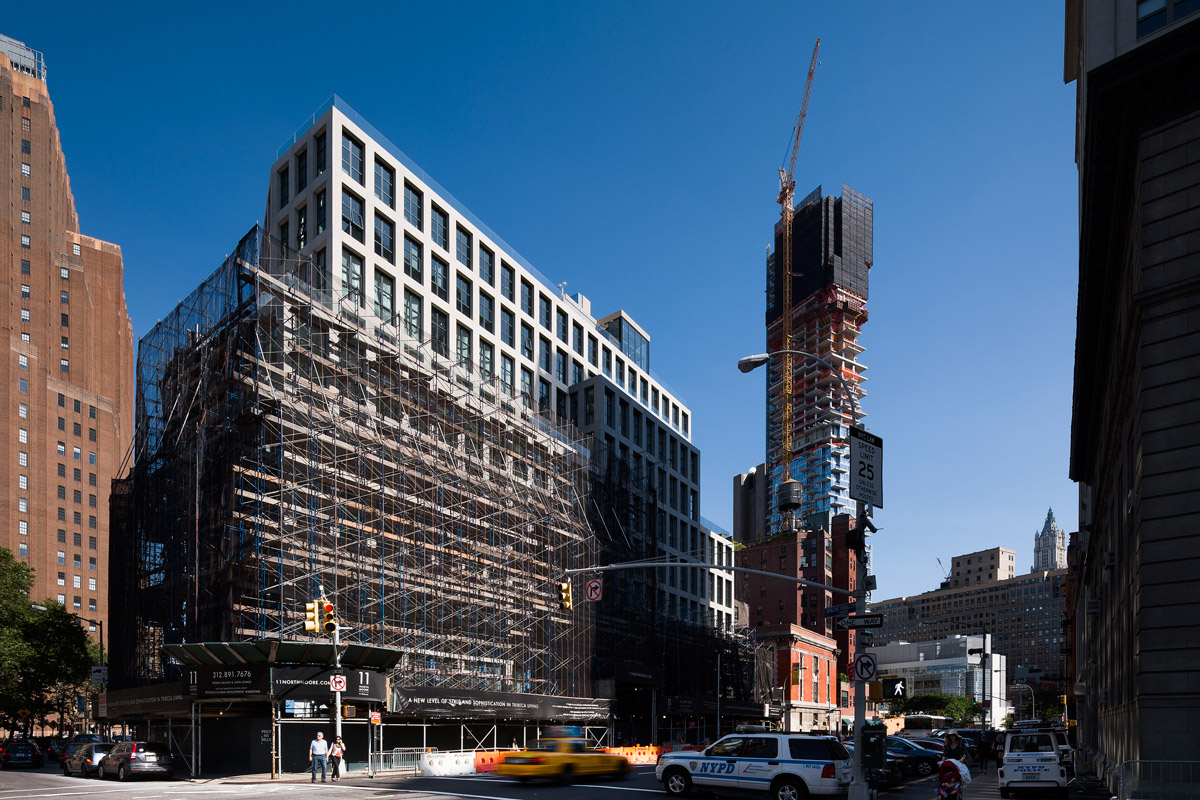My first real estate venture was in Tribeca. In 1995 it was desolate, sparse and mysterious. Street traffic was minimal, pedestrians were seldom seen. This was when Tribeca remained a hidden gem. Only a smattering of retail shops and restaurants reserved for those hip New Yorkers who were creating a scene, while being seen.
Fast forward: 27 years later:
I had dinner in Tribeca last week, and was left shell-struck. Not in a good way but saddened by the lack of character the loss of identity but mainly the infiltration of high-end apartment buildings (not lofts) with designated doormen keeping those former hip New Yorkers safe from the wanna-be’s.
What’s happening to the city?
What’s happened to Tribeca?
It’s as if the real estate gods cast a spell on the triangle below canal street, and turned it into an urban Hampton. Not that I don’t enjoy the Hamptons but it belongs at the eastern tip of Long Island and not emanating its presence on city streets. It appears the excessive wealth of the wolves of wall street have replaced the ‘originals’ aka artists in residence.
The days of DeNiro hanging at the Tribeca Grill, seem distant. Mingling at the Odeon bar with Harrison Ford, and dancing to Thelma Houston at Area, are memories long gone. The lure of old New York, lined with cast iron buildings housing artists; cobble stone streets, dangerous for stilettos / those making quick exits, have become replaced by serene and surreal landscapes of high rise erections in the sky.In the golden days of Gotham City, I vividly recall the flash of lightening, the burst of electricity at the roof top parties hosted by some of my favorite humans /developers.
In the mid 90’s I represented both Aldo Andreoli and Roberto Brambilla. The memory of these soirees still linger, like a song being played that sears your heart and brings you back in time. In retrospect – those were the days.
What’s happening to the city?
What’s happened to Tribeca ?
Photo by Field Condition, New York NY

Beautifully written Laura. I too remember Tribeca before it became a “hot spot”. Miss those days!
What an inspiring magazine! Glad you are getting out and about, contributing your insights and visions. How are Chelsea and the Village transforming? Where are people dancing now that the Limelight has closed? Looking forward to reading more of your travels in the Big Apple!
Spot on about Tribeca. Looking forward to more of your insights on other NYC neighborhoods.
Love your recollection, Laura. Voiced by a real New Yorker. Allow me to travel back a few decades earlier when PreBeCa was simply the Lower West Side, a vibrant zone of alimentary commerce (Washington Market) anchored by an equally vibrant Hudson River waterfront when New York was an important maritime locale. Beyond the commerce conducted in repurposed townhouses along Washington and Greenwich Streets as well as many significant structures erected in the 19th century to house these businesses, the area housed many workers and their families employed by these businesses. This was the original definition of ‘local,’ people living and working within their own community. Artists were always present in TriBeCa and many more migrated to the area in the 1960s onward. As the misguided vision of the World Trade Center site took hold displacing Radio Row and portions of Little Syria, the area north of Vesey Street to Hubert Street west of Greenwich Street became an urban renewal target to be erased and improved. Although many of the artists and other residents resisted displacement, the battle was lost. Yes, a substantial portion of present day TriBeCa exists but much was bulldozed. Danny Lyon’s 1969 publication “The Destruction of Lower Manhattan” is a superb photographic document of this calamity and worth a look; it’s one of my most cherished books.
Thanks for your nice comment Wayne. As an old TriBeCa resident/developer I personally witnessed what happened after 9/11: another world.
Dear Laura,
Your article reminds me of the Robert Frost poem, “Nothing Gold Can Stay.” But who thought that could happen to our Tribeca. I give Tribeca credit. . . she held out a long time before surrender. You found two amazing properties in that magical place for me to enjoy and to start new chapters. May Tribeca regain her hip grit one day. Hello Aldo. Your work is imaginative and stunning as always.